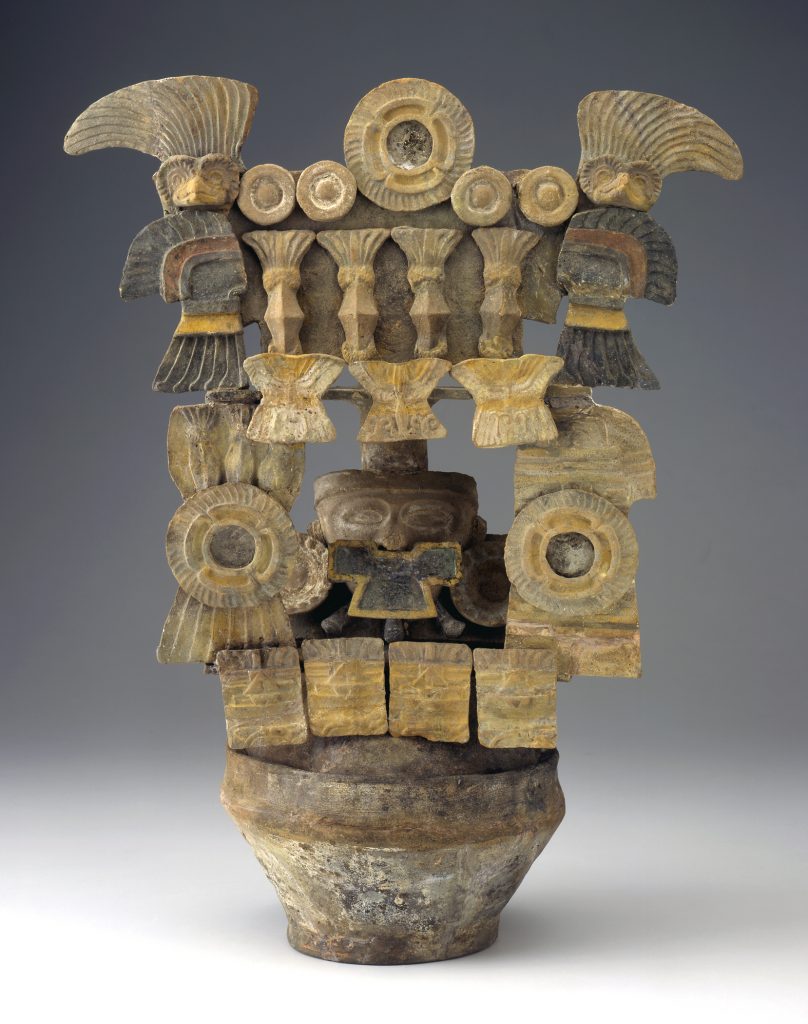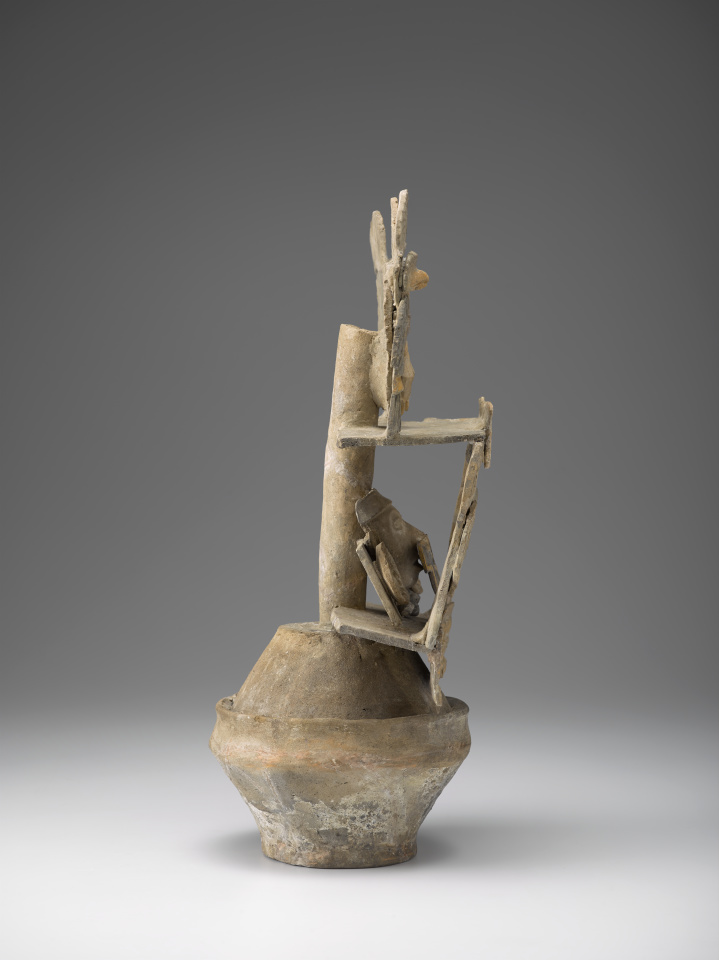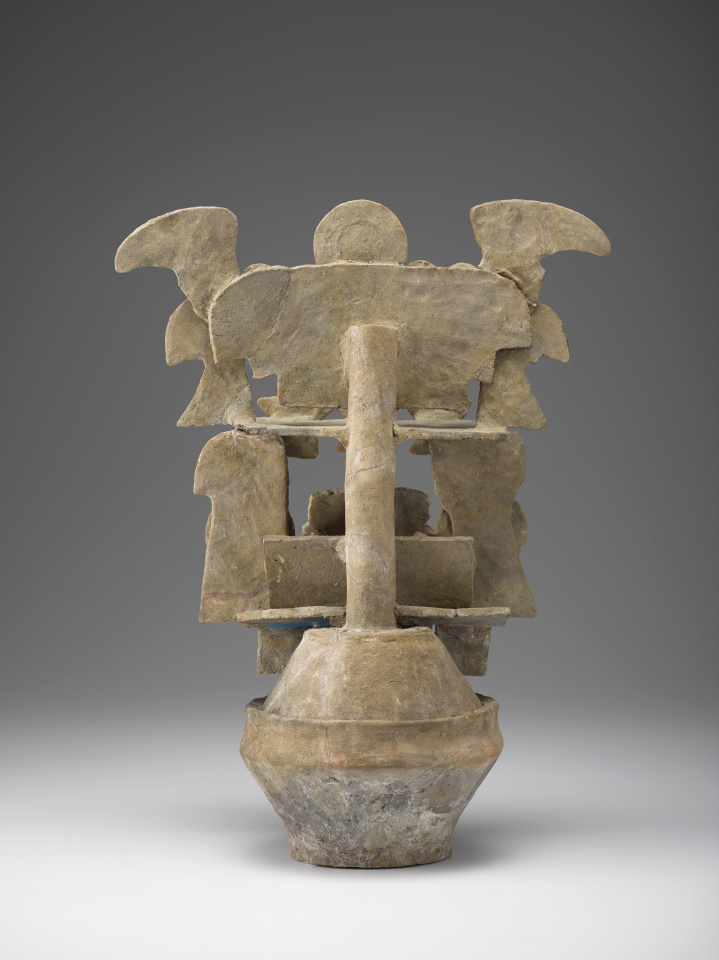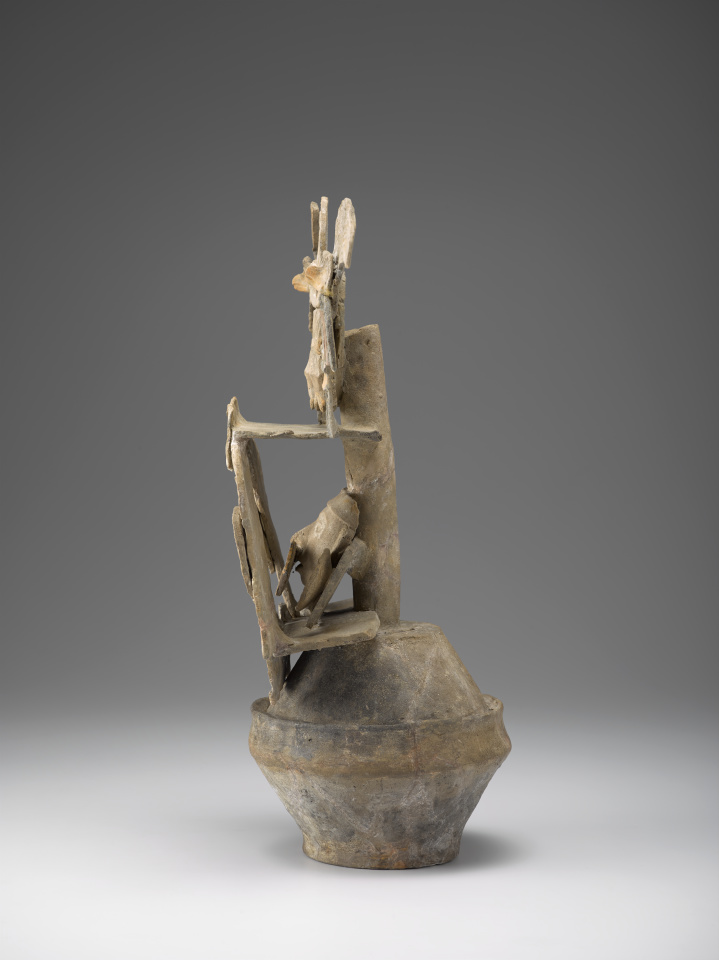Incense Burner (work of art)
Artwork Info
Key Ideas about this Work of Art
- This incense burner has three levels: a base on which incense was burned, a middle section featuring a dead warrior figure, and a temple at the top, with four columns and a quetzal (pronounced kets-all) bird on each side.
- This object honored warriors who died in battle. Warriors in the Maya civilization were powerful members of society and had extravagant mortuary (burial) rituals.
- Teotihuacán (pronounced tee-oh-tee-wa-con) is the city from which this style of art comes. It was the largest power in Mesoamerica during the fifth century. Its powerful elite rulers and imperial wealth allowed the people of Teotihuacán to travel throughout Mesoamerica and influence other civilizations along the way.
- Animal imagery on the incense burner includes quetzal birds and a butterfly nose piece worn by the warrior. Quetzals are linked to creation stories in Mesoamerica. Butterflies are associated with rebirth.
- The incense used in this burner would have included coals and copal incense (tree resin), which were abundant in Mesoamerica.
Learn More
This ceramic incense burner comes from Tiquisate (pronounced tee-kee-sah-tee), an area located along the Pacific coast of Guatemala. Although it was found in Guatemala, this incense burner imitates an art style from Teotihuacán, a famous ancient city in Central Mexico. Located nearly 700 miles from the site where this incense burner was found, Teotihuacán was the first ancient city in the Americas. It was built nearly 800 years before the Aztec Empire.
Incense was burned inside the base of this object, which allowed smoke to escape through the chimney attached to the back. The lid showcases a miniature temple decorated with quetzal birds, bright feathers, flowers, and jewels. In the center there is a dead warrior wearing a butterfly nose piece that symbolizes the soul. The combination of these elements represents the Flower Mountain, a solar paradise full of shining colors for the people who died on the battlefield. In Mesoamerica, butterflies symbolize rebirth and metamorphosis, the process of an animal transforming from an infant to an adult in multiple phases. During its life, a butterfly develops from a caterpillar to a pupa wrapped in a hard cocoon. When it finally emerges from the cocoon, it is a fully formed butterfly.
In the ancient Americas, flames were depicted in the shape of butterflies and flowers. This cone-shaped lid represents a brightly burning mortuary (burial) bundle. This incense burner would have been placed on top of fiery offerings, as a metaphor for the cremation and burial of warriors. For those who died in battle, fire represented a way they could transform in order to enjoy the afterlife.
Additional Resources
Resources for Teachers
- Watch a video to learn about the main features of Teotihuacán.
- Learn more about quetzals and their symbolic meaning in Mesoamerica.
- Read about the importance of butterflies in Mesoamerica.
Resources for Students
- Learn more about the city of Teotihuacán.
- Read about quetzals and discover interesting facts about these birds.




